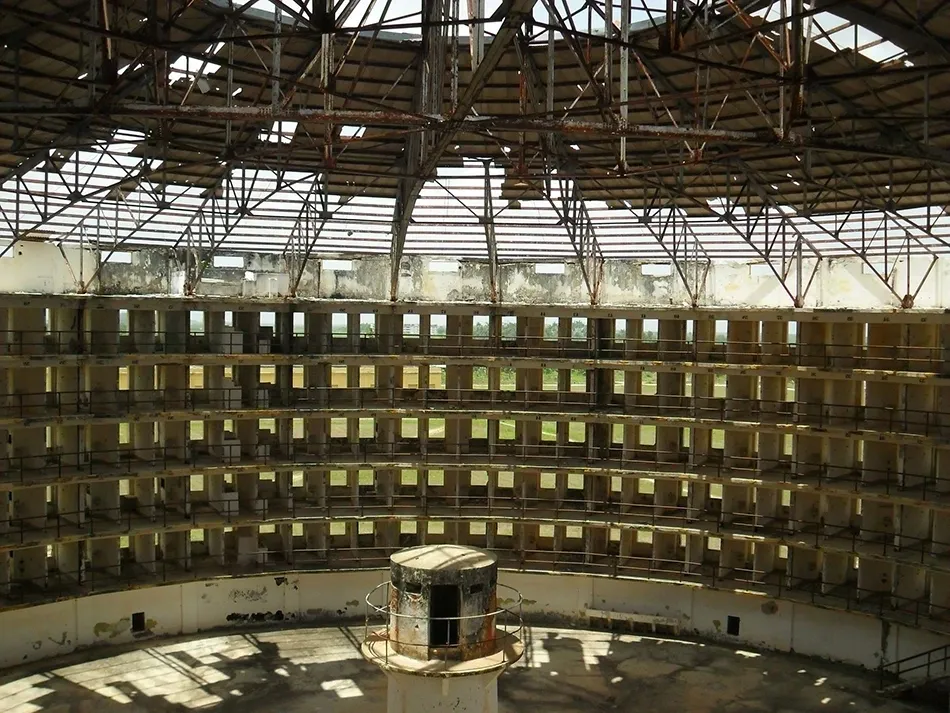The Presidio Modelo was this fancy idea of a prison, built on this island called the Isla de Pinos, which they now call the Isla de la Juventud in Cuba. It’s in this part of town called Chacón, near Nueva Gerona.

They started building it back when this guy Gerardo Machado was running the show, somewhere between 1926 and 1928. Basically, it’s made up of five big round buildings, and inside each one, there are cells stacked around a central point where the guards could keep an eye on everyone. It could hold around 2,500 prisoners, so the guards pretty much had their eyes on everyone, all the time.

After the rebel attacks on Moncada Barracks back in July 1953, a bunch of survivors, including Fidel and Raul Castro, got locked up there until 1955. Those few years were rough – the place was crammed with about 6,000 guys, and it was a real mess. Trash piled up, there wasn’t any running water, and the food was barely enough to get by on.
But here’s the kicker: Castro and his crew lucked out a bit because they got stuck in the hospital wing, where things were a tad better. They had more space, better beds, and overall, slightly improved conditions.

Now, get this – Batista, the big boss at the time, messed up big time by putting all the troublemakers in the same place. It basically turned that hospital wing into a kind of rebel training ground. They’d meet up for political talks every day, and they even managed to send messages to their supporters all over Cuba on the sly.
In a letter, Castro was like, “Man, this prison is like a university for revolutionaries! I’m learning so much about the world from in here.”

After Castro took over in 1959, the Presidio Modelo kept on running. But by 1961, things were getting pretty chaotic. There were way too many people crammed in there – like up to 4,000 prisoners – and tensions were high. Riots and hunger strikes were breaking out left and right, especially leading up to the Bay of Pigs invasion. Rumor has it they even dug tunnels under the place and filled them with explosives.

Some pretty well-known Cuban activists like Armando Valladares, Roberto Martín Pérez, and Pedro Luis Boitel spent time there, too. But the government had enough of the mess and shut the place down for good in 1967.
Nowadays, it’s turned into a museum and a big deal national landmark. They’ve even turned the old admin building into a school and research center.

